LA QUINTA, Calif. —
Golf courses. Ponds. Acres of grass. Cascading waterfalls. Displays of water extravagance zip past each day when Sendy Hernández Orellana Barrows drives to work.
She said these views seem like landscapes that have undergone “plastic surgery,” transforming large parts of the Coachella Valley’s desert into scenes of unnatural lushness.
From La Quinta to Palm Springs, the area’s gated communities, resorts and golf courses have long been promoted with palm-studded images of green grass, swimming pools and artificial lakes. The entrepreneurs and boosters who decades ago built the Coachella Valley’s reputation as a playground destination saw the appeal of developments awash in water, made possible by wells drawing on the aquifer and a steady stream of Colorado River water.
“They wanted to basically fabricate this mirage oasis of what they thought the desert could be, with these never-ending golf courses and lagoons,” Hernández Orellana said. “But the reality is that with climate change, we need to start walking away from that.”
She said that means rethinking some of the “unsustainable decisions” that cleared the way for water-intensive developments, and starting to put restrictions on the wasteful misuse of water.
“The ponds and the grass are wasteful,” Hernández Orellana said. “If you look at all the country clubs, they all have hundreds and hundreds of feet of grass, artificial lagoons. We don’t need that.”
Hernández Orellana, who works as a conservation program manager for a nonprofit group, is president of the CactusToClouds Institute, which she co-founded with two friends and her husband, Colin Barrows, a naturalist and desert advocate.
She said she believes becoming more climate-resilient will require making better use of water by prioritizing drinking water for communities and reducing consumption that isn’t vital. It would help, she said, “if we could just cut down on the amount of water that’s being wasted.”
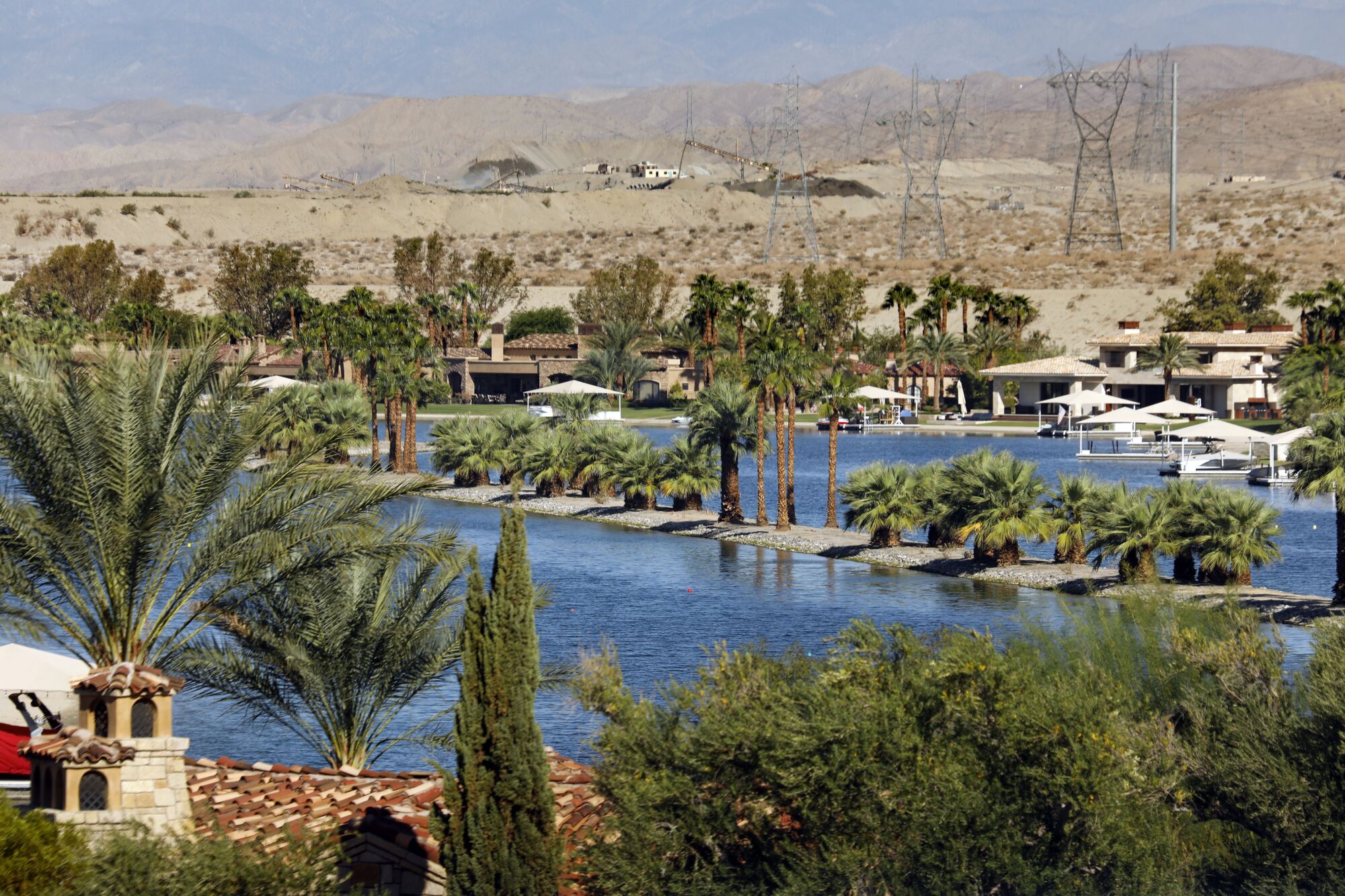
Shadow Lake Estates in Indio is a development built around a private artificial lake where people boat and water-ski.
(Carolyn Cole / Los Angeles Times)

Peninsular bighorn sheep feed on grass in La Quinta.
(Carolyn Cole / Los Angeles Times)
“The golf courses, the lagoons, the waterfalls, all of those artificial water features that we really don’t depend on to survive, I think that’s where we should start making some of the cuts,” she said.
However, the elected leaders of the Coachella Valley Water District have taken a different approach. They recently announced plans to cut the amount of Colorado River water the district uses to replenish the aquifer. This strategy will reduce inflows to the valley’s source of drinking water for three years, while sparing big users such as golf courses from mandatory cuts, at least for the time being.
“We want to be the least disruptive possible to any entity, to any user,” said Cástulo Estrada, vice president of the water district’s board. “This is voluntary. And we think that, for now, we could do it out of replenishment without having to impact anybody.”
Responding to the federal government’s call for urgent measures, the water district has proposed to reduce water use by as much as 35,000 acre-feet per year for the next three years, a decrease of about 9%.
A portion of the water savings could come from farmers or others who agree to use less water in exchange for payments. But the water district’s managers anticipate securing the bulk of the reductions by curtailing water deliveries to a groundwater replenishment facility in La Quinta, where Colorado River water pours into ponds and percolates into the soil to recharge the aquifer.
The facility, one of the valley’s main groundwater recharge sites, has been taking in Colorado River water since 2009. Studies have shown that the imported water has not only boosted groundwater levels nearby, but has also largely stopped the ground from sinking, a costly problem that had previously damaged roads and cracked the foundations of homes.
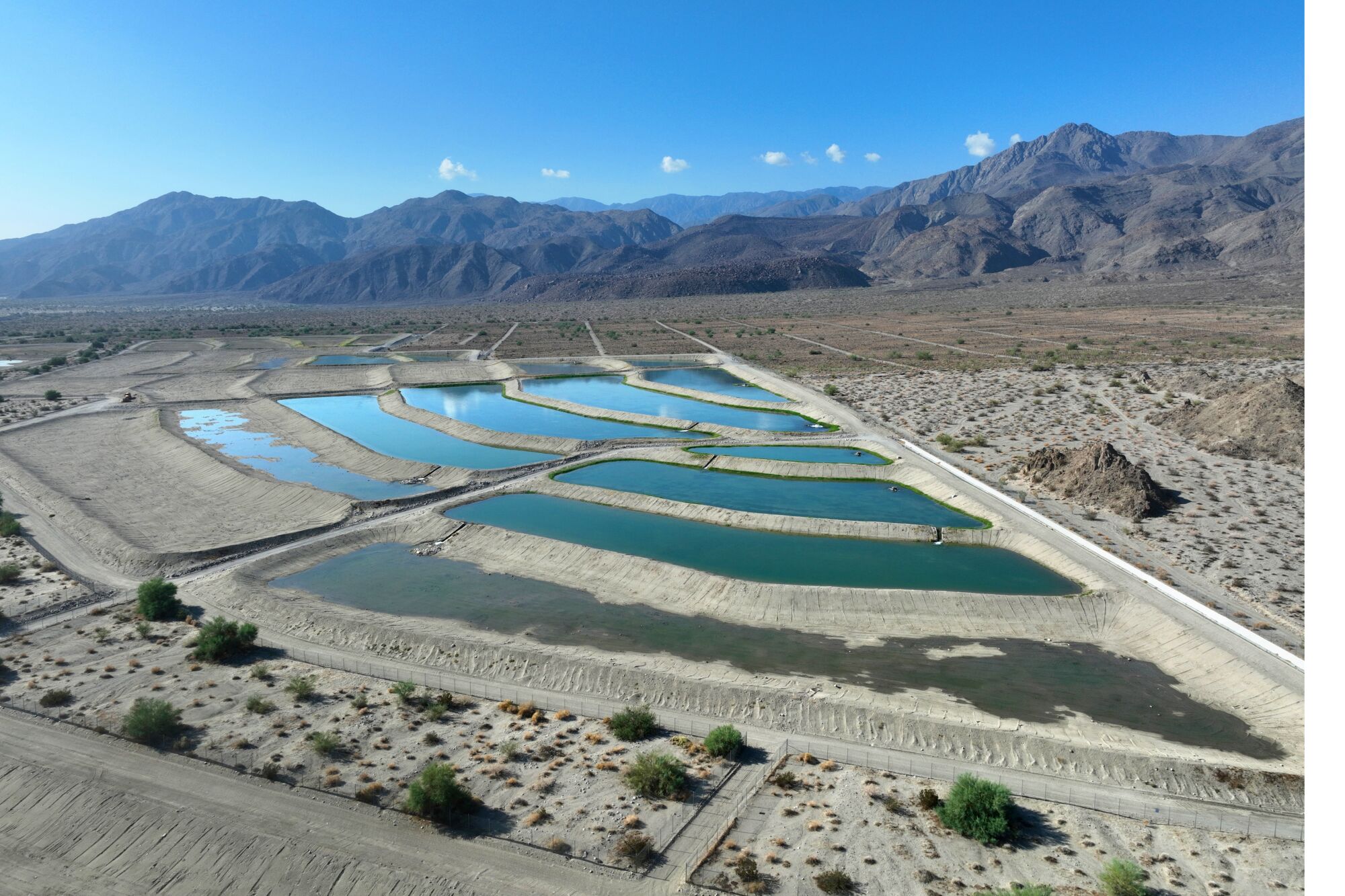
At the end of the Coachella Canal, the Colorado River water is routed to ponds at a groundwater replenishment facility, recharging the aquifer.
(Carolyn Cole / Los Angeles Times)
Estrada said that although recharging groundwater continues to be an important part of the district’s long-term strategy, board members decided to curtail replenishment as a short-term contribution.
“This is the easiest way, the less disruptive way,” Estrada said. “We feel that we can properly give up the replenishment for now, without creating too much of an impact.”
State water regulators last year ordered urban suppliers to prepare for shortages by implementing Level 2 measures under their local drought plans. The Coachella Valley Water District asked customers to reduce outdoor water use by 10% and began charging penalty fees on bills for those who fail to meet the target.
But the state hasn’t required agencies to reduce the use of nonpotable water. And according to the CVWD, the untreated Colorado River water that is delivered by canal falls into that category, as does water that is pumped from private wells for outdoor irrigation.
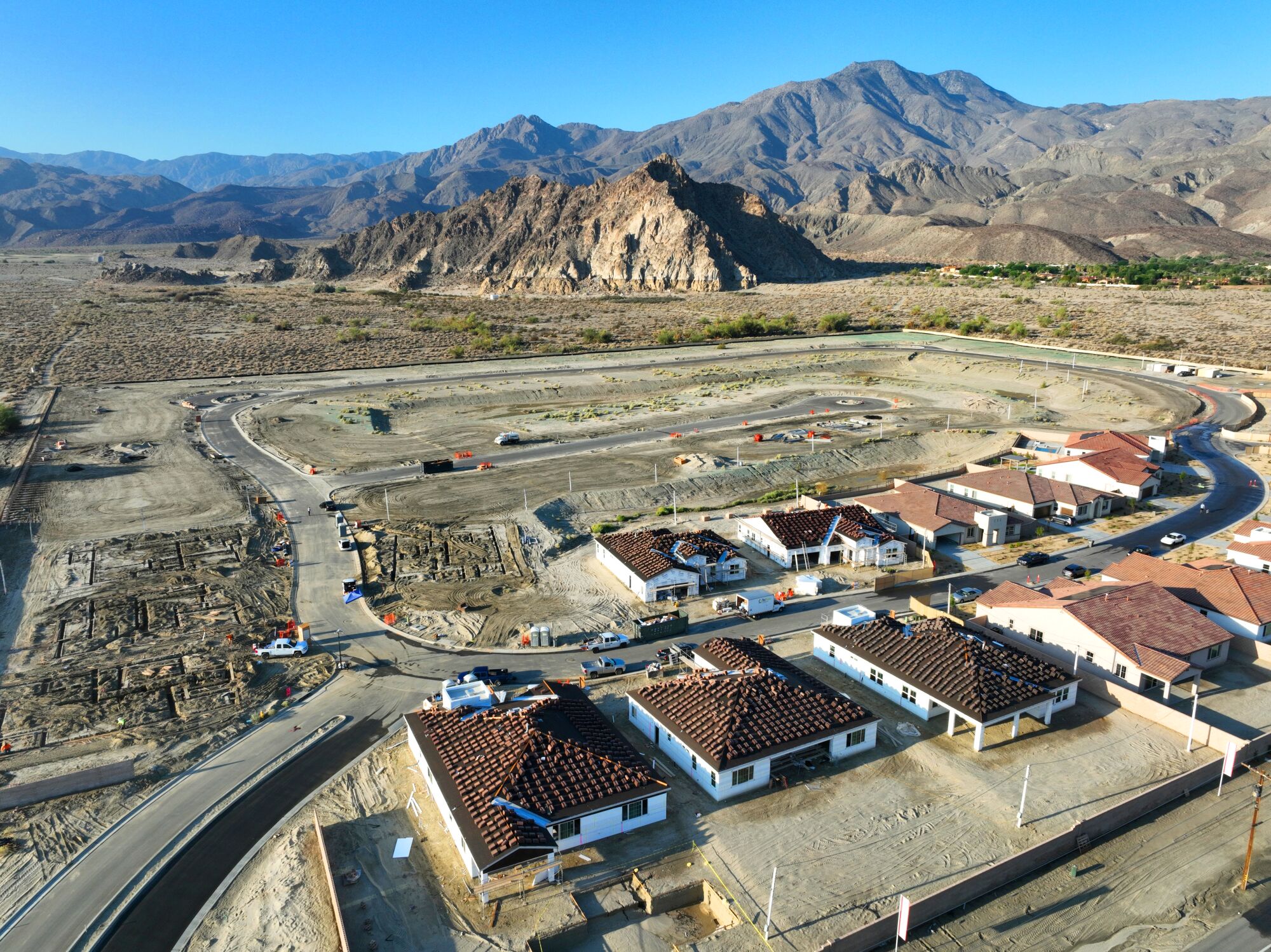
A housing development called Cantera at Coral Mountain is under construction in La Quinta.
(Carolyn Cole / Los Angeles Times)
Unlike residents, who are subject to drought restrictions, there are no restrictions for those using private wells or canal water to irrigate farmland, golf courses or grass-covered landscapes, or to fill artificial lakes.
Barrows said the water district’s decision to curtail aquifer replenishment is like “charging the water credit card” and putting off harder decisions for later.
“Eventually, it’s going to get bad enough that there’s just not going to be the water,” Barrows said. “We’re going to have to deal with less water one way or another.”
If the Coachella Valley were mandated to further reduce its water usage, Estrada said he expects “we probably would start putting limitations on the golf courses.”
Estrada said the district’s officials also have the authority, if necessary, to limit groundwater pumping. But Estrada said he and other board members feel such restrictions aren’t necessary at this time.
“There is enough water,” Estrada said. “We need to be smart about how we do things. But we are not in a crisis right now.”
For its size, the Coachella Valley has a relatively large water allocation. Though its population is much smaller than the Las Vegas area, it gets more imported water.
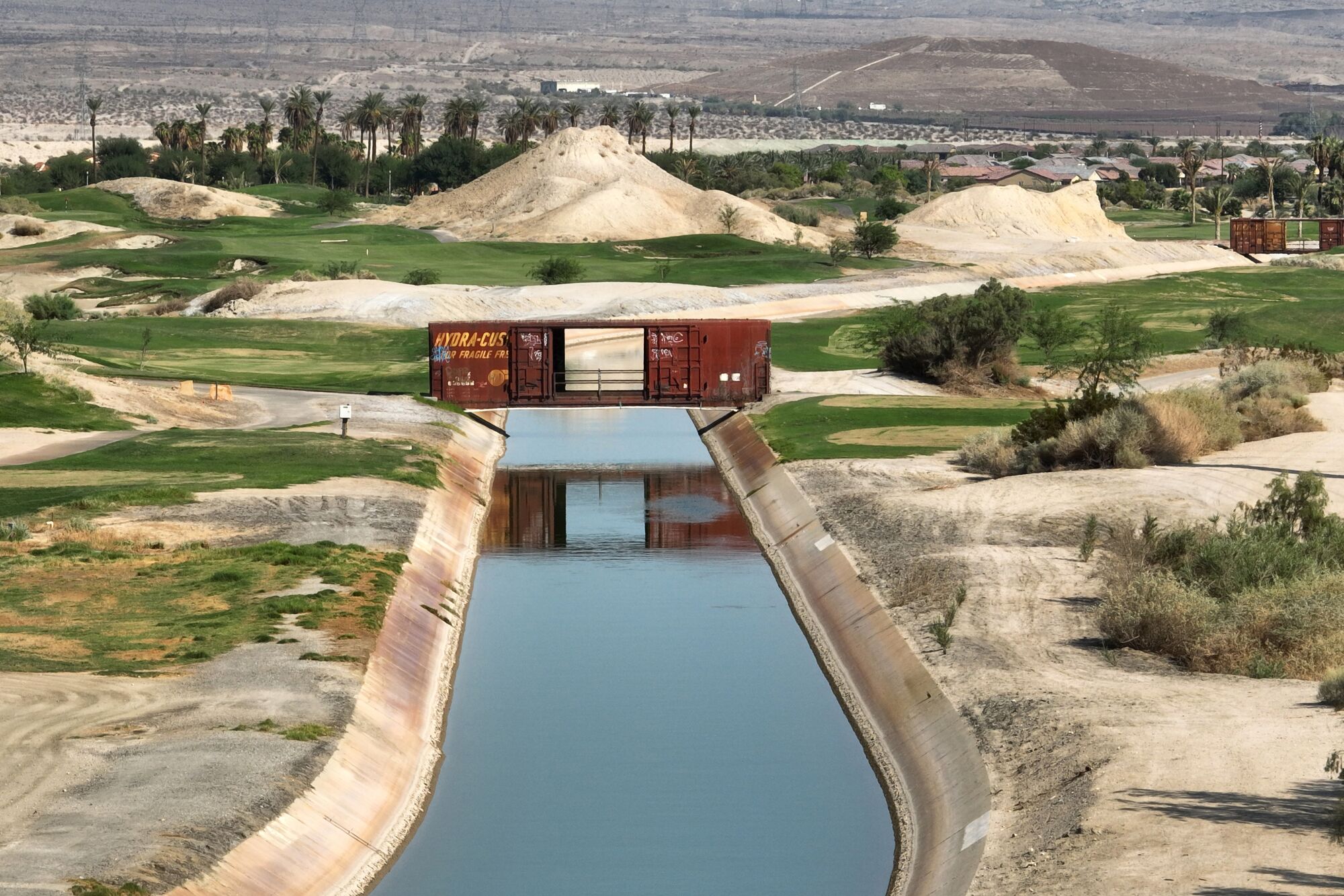
The Coachella Canal carries Colorado River water and supplies some of the Coachella Valley’s golf courses.
(Carolyn Cole / Los Angeles Times)
Colorado River water started flowing to farmland in the valley in 1949 through the Coachella Canal, a branch of the All-American Canal that runs across the desert. The imported water enabled farms to flourish, and nowadays agriculture consumes 72% of the canal’s water, accounting for about half the valley’s usage and producing crops such as grapes, dates, peppers, lemons and carrots.
Since 2003, the Coachella Valley has received an increasing amount of Colorado River water under an agreement with the Imperial Irrigation District.
The local water agencies also have an agreement to obtain imported water in the western side of the valley by trading their allotted State Water Project supplies to the Metropolitan Water District of Southern California for equivalent amounts of Colorado River water. This water flows from the Colorado River Aqueduct and pours into a groundwater replenishment facility on the outskirts of Palm Springs. During the last three years of drought, these supplies have been reduced to a fraction of the full allocation.
There are about 120 golf courses in the Coachella Valley, and they account for 18% of the area’s water use. A single course can consume as much as 1 million gallons a day.
Records show the valleys’ golf courses used about the same amount of water in 2019 as they did in 2010, drawing more than half their water from wells, nearly a third from the Colorado River and the remainder from recycled wastewater.
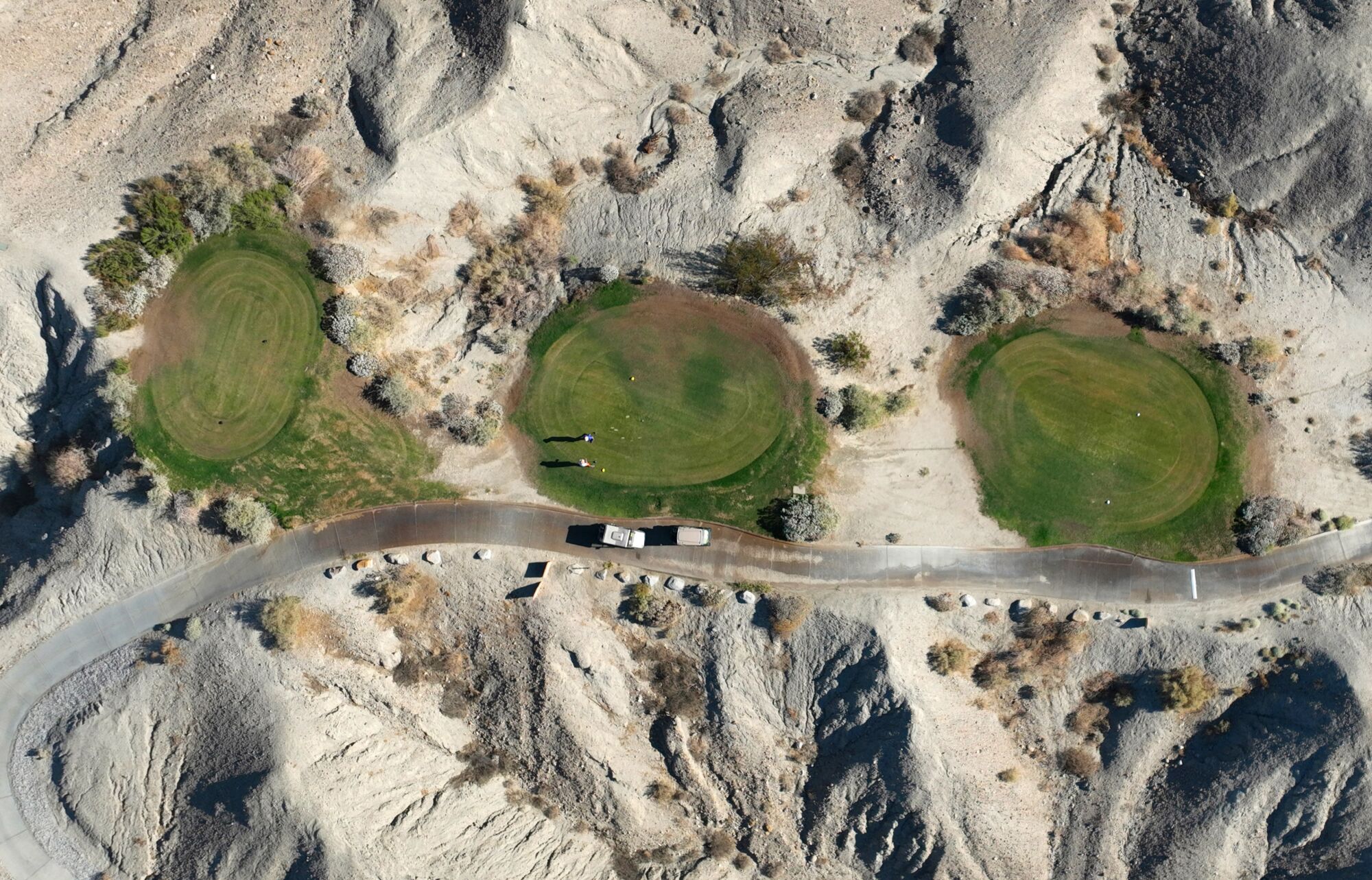
Tee boxes at the Golf Club at Terra Lago are surrounded by desert. A single golf course in the area can consume as much as 1 million gallons of water a day.
(Carolyn Cole / Los Angeles Times)
While new golf courses have become rare, developers have been turning to other types of water-intensive amenities, such as lagoons and surfing parks. Projects that are in the works include a 20-acre surf lagoon in Thermal and a 24-acre lagoon at Disney’s Cotino development in Rancho Mirage.
But in La Quinta, the City Council recently rejected plans for an 18 million-gallon surf park after an outpouring of opposition by residents, who argued the resort would drain precious water that the community needs.
Hernández Orellana and Barrows were among those who spoke against the surf park. They said they were pleased, and a bit surprised, when it was defeated.
The couple said filling more artificial lakes in the desert simply doesn’t make sense, especially with the Colorado River dwindling. Becoming more sustainable, they said, demands switching to much lower water use.
They’ve demonstrated how it can be done at their house, where they have no grass and no swimming pool. Their frontyard has native plants that attract hummingbirds and monarch butterflies. In the back, they grow tomatoes and peppers in their garden, and their water bill shows they use much less than most homeowners.
“Our desert is beautiful as it is, and I think people should learn how to appreciate it and stop … putting it under the knife,” Hernández Orellana said. She said that although residents can help, local elected officials also should stop approving developments like surf parks, and should start placing restrictions on profligate water use.
She said she’s concerned that if overpumping of groundwater is allowed to continue, there will be consequences. And even with the valley’s high-priority water rights, “those rights are not really going to do much for us if the river runs dry.”
“It’s definitely going to affect our area if people continue to be irresponsible,” she said. “Sooner rather than later, people are going to start regretting what they did.”
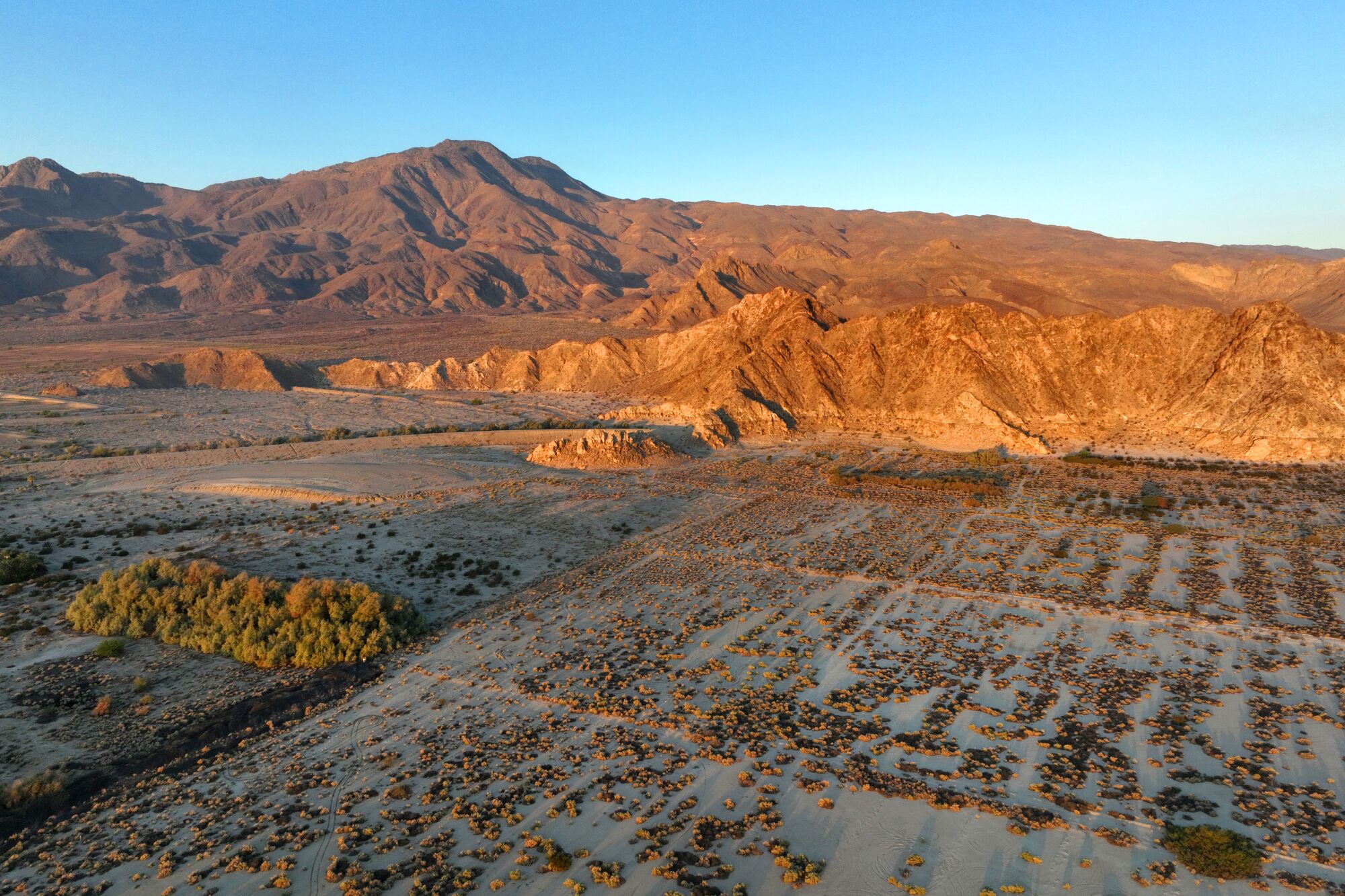
The La Quinta City Council recently rejected a developer’s proposal for a large wave pool and surf park on this property.
(Carolyn Cole / Los Angeles Times)

